Parishan Lake | Iran’s Largest Freshwater Lake
Parishan Lake, surrounded by rolling hills and teeming with diverse wildlife, creates a serene and scenic retreat for nature enthusiasts and bird watchers alike.
Located in the scenic Arjan Plain of Fars Province, Parishan Lake is one of Iran’s most cherished natural treasures, located near the historical city of Kazerun.
Known for its picturesque views and rich biodiversity, Parishan Lake has long been a haven for wildlife, including migratory birds and rare plant species. However, in recent years, the lake has faced severe threats due to drought, unauthorized water extraction, and environmental damage. These challenges are endangering its ecosystem and the many animals that depend on it. While efforts are being made to restore the lake, the future of this vital wetland remains uncertain.
Visiting Parishan Lake offers an opportunity to witness nature’s beauty—and to support the preservation of one of Iran’s most delicate ecosystems.
If you’re looking to add a unique natural wonder to your itinerary, consider Parishan Lake. Visit our Tailor-Made Tours page to customize a tour that includes this beautiful lake and experience the breathtaking scenery and diverse wildlife it has to offer.
Parishan Lake Natural Beauty and Landscape
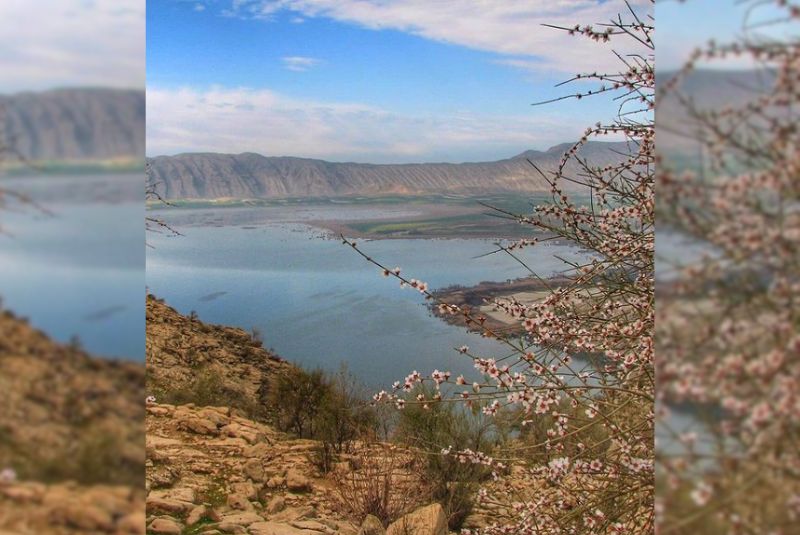
Nestled within the Arjan Plain in Fars Province, Parishan Lake is a serene oasis surrounded by the rugged beauty of the Zagros Mountains. These towering mountains, some only a few kilometers from the lake’s edges, shape the lake’s unique landscape and shield it from desert winds. Their slopes, often covered with lush grasses and wildflowers in the spring, provide a striking contrast to the lake’s tranquil waters.
Parishan Lake itself stretches over a vast area, transforming with the seasons as water levels rise and fall. During the high-water season, the lake reaches approximately 4,300 hectares, creating a sprawling wetland that reflects the blue sky and the peaks of the Zagros in a stunning mirror-like display. The southern mountains, in particular, are very close to the lake, making for picturesque scenes of rock faces meeting the water’s edge.
The geography around the lake is diverse, featuring salt-loving plants that thrive in the region's unique ecosystem. Spongy vegetation and tamarisk shrubs surround the lake, while the open plains nearby provide grazing areas for local wildlife. The lake’s beauty reaches its peak in the spring when wildflowers bloom along the shores, and migratory birds fill the sky and lake surface, adding vibrant life to the area. The blend of rugged mountains, open plains, and reflective waters make Parishan Lake one of the most scenic natural sites in southern Iran.
| Read more: Iran’s Top 10 Seas and Lakes to Explore
Parishan Lake Flora and Fauna
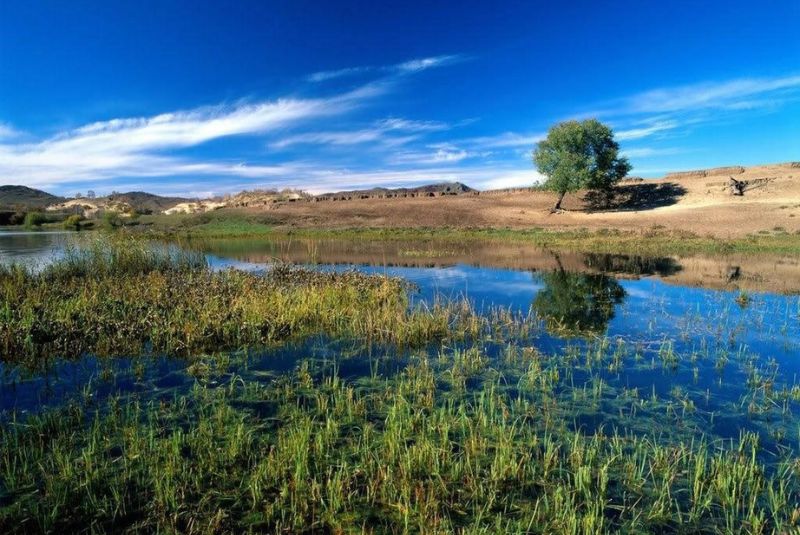
Parishan Lake is a rich ecological hub, home to a diverse range of plant and animal species that thrive in and around its waters. The lake’s unique blend of aquatic and terrestrial habitats supports a variety of flora, especially salt-tolerant plants that flourish in the saline soils. Among these are tamarisk (gaz) shrubs and resilient spongy vegetation, which provide shade and shelter for the area’s wildlife. During the spring season, vibrant wildflowers emerge along the lake’s shores, creating a picturesque setting and offering additional food sources for insects and birds.
One of the lake’s most remarkable features is its role as a sanctuary for migratory birds. Flocks of cranes, pelicans, geese, ducks, and coots arrive from distant regions, drawn by the lake’s relatively warm climate and ample food. These birds transform Parishan Lake into a lively spectacle of flapping wings and calls, making it a prime birdwatching destination in Fars Province. Unfortunately, the declining water levels have impacted the migratory patterns, reducing the number of species in recent years.
Among the terrestrial wildlife, the Persian fallow deer is a notable resident. Found in the plains and woodlands around the lake, this endangered species is symbolic of Iran’s rich biodiversity. Other local species, including turtles, generally amphibians, and native birds like the cattle egret and francolin, add to the ecological richness. Protecting Parishan Lake’s flora and fauna has become increasingly vital as water shortages and environmental challenges threaten this unique habitat.
Things to Do and See at Parishan Lake
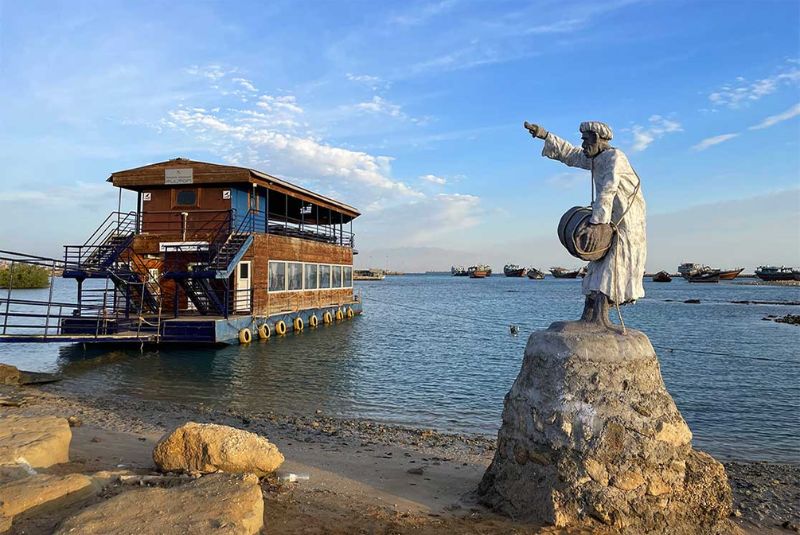
Parishan Lake offers visitors a variety of activities and scenic attractions that highlight its natural beauty and cultural surroundings. While the lake’s water levels have fluctuated in recent years, the area still draws nature lovers, adventure seekers, and those interested in local culture.
Birdwatching is one of the most popular activities at Parishan Lake. The wetland is a sanctuary for many migratory bird species, especially in the cooler months of autumn and winter, when visitors can observe cranes, pelicans, and various waterfowl. The area around the lake transforms into a paradise for birdwatchers, with prime viewing points near the reed beds and shores where birds come to feed and rest.
Boating and Fishing are also traditional activities that allow visitors to enjoy the peaceful waters up close. Small boats are available for rent, offering a tranquil ride across the lake’s surface while taking in the surrounding Zagros Mountains. Fishing, once a thriving local tradition, is now limited due to declining water levels, but remains a cherished activity, especially for locals who remember the lake’s fishing legacy.
Hiking and Photography around the lake’s edges offer another way to experience Parishan’s stunning landscapes. Paths near the water and surrounding fields provide scenic views of the lake, set against the dramatic backdrop of the Zagros Mountains. During the spring, fields of blooming wildflowers create colorful, picture-perfect scenes, ideal for photography.
| Related: Best Places for Instagram Photography in Iran
Nearby, visitors can explore cultural and historical sites, such as the ancient city of Bishapur and the scenic Chogan Valley. The Arjan Plain and Barm Plain are also close by, where nature lovers can discover more plant and animal species and visit historical caravanserais, adding depth and history to the natural beauty of the Parishan region.
Parishan Lake offers an enriching experience for all ages, combining outdoor adventure, ecological discovery, and cultural exploration in the heart of Fars Province.
Parishan Lake Environmental Importance
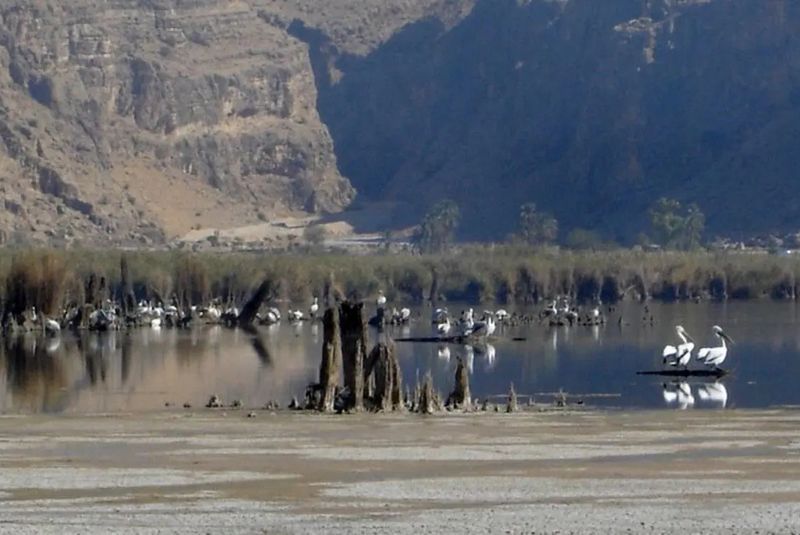
Parishan Lake, as one of Iran's largest freshwater lakes, plays a crucial role in maintaining the ecological balance of Fars Province. Its position within the Arjan and Parishan Protected Area supports a complex ecosystem that includes migratory birds, unique plant life, and various wildlife. The lake’s wetland environment is essential for local biodiversity, as it serves as a seasonal refuge for countless bird species and provides critical breeding grounds for both aquatic and terrestrial wildlife.
However, Parishan Lake faces severe environmental challenges, largely driven by prolonged drought, excessive groundwater extraction, and human intervention. Climate change has led to decreased rainfall in the region, intensifying water evaporation and further depleting the lake’s levels. Over the past decade, increasing temperatures and reduced precipitation have pushed the lake toward critical levels of dryness, affecting all life within this habitat.
Human activities, such as unauthorized well digging, have compounded the lake’s water loss, as farmers seek water sources for irrigation in nearby agricultural lands. Additionally, the construction of roads and increased livestock grazing around the lake have disturbed natural vegetation, which exacerbates soil erosion and the degradation of the lake bed. The operation of a nearby power plant, which some believe accelerates the drying of Parishan Lake through increased regional temperatures and groundwater use, has also raised concerns among environmentalists.
The drying of Parishan Lake threatens not only the natural landscape but also the communities relying on it. With less water available, migratory birds have been dwindling, and local agriculture and fishing industries have suffered. Complete desiccation of the lake would have a devastating ripple effect, endangering nearby villages and pushing regional flora and fauna toward extinction.
To reverse this trend, sustainable solutions are urgently needed. The Parishan Wetland Research and Information Center has explored water transfer options, such as diverting water from the Nargesi Dam to support the lake. However, this solution requires more thorough assessment and funding to be effective long-term. Additionally, the implementation of better regulations around well digging, livestock grazing, and environmental protection could reduce the human impact on the lake. By prioritizing conservation efforts and sustainable resource management, Parishan Lake may still recover, preserving this natural treasure for future generations.
| Suggestion: Why Explore Iran's Ecotourism Wonders
Parishan Lake Nearby Attractions
The area surrounding Parishan Lake is rich in natural and historical attractions that enhance any visit with additional exploration opportunities. Arjan Plain, Barm Plain, the ancient city of Bishapur, and Chogan Valley offer diverse experiences that make this region a compelling destination for nature lovers and history enthusiasts alike.
Arjan Plain
Located about 60 kilometers from Parishan Lake, the Arjan Plain is a scenic spot nestled along the Shiraz-Kazerun route. This area, famed for its expansive grasslands and vibrant wildflowers in spring, is a pristine haven for nature enthusiasts and photographers. In the past, Arjan Plain was a royal hunting ground, where ancient Iranian rulers enjoyed the landscape and wildlife. Today, it is a favored spot for nature walks and picnics, especially during the spring, when the hills and valleys are covered with blooming flowers and greenery. The plain also features Cheroniz Waterfall, where visitors can camp and enjoy the tranquil beauty of cascading water against rocky cliffs.
Barm Plain (Mian Kotal Resort)
Barm Plain, also known as Mian Kotal Resort, is another striking natural area about 30 kilometers east of Kazerun and just 20 kilometers from Parishan Lake. The plain is adorned with diverse plant species and, in spring, bursts into a display of colorful flowers. It’s also home to the historical Mian Kotal Caravanserai, which provides a glimpse into the region's past as a trade route and rest stop for travelers. The Barm Plain is also a sanctuary for Persian fallow deer, a rare species highly valued in Iran’s wildlife conservation efforts, adding an extra allure for animal lovers and wildlife photographers.
The Ancient City of Bishapur
A historical marvel in the region, the ancient city of Bishapur is located around 20 kilometers northwest of Kazerun and roughly 40 kilometers from Parishan Lake. Founded during the Sassanid era, Bishapur was once a vibrant city and today stands as an archaeological site of international importance. Registered on the UNESCO World Heritage List, Bishapur offers a journey through ancient Persian history, with highlights like six elaborate rock reliefs along the Shapur River, the Anahita Temple, and the Mosaic Hall. Visitors to Bishapur can admire the intricate artistry and architecture that have withstood centuries, reflecting the glory of the Sassanid period.
Chogan Valley (Tang-e Chogan)
Adjacent to Bishapur, Chogan Valley is a natural and historical site that once served as a royal recreational area. The valley is bordered by the Shapur River, which enhances its natural beauty, and is dotted with ancient monuments connected to Bishapur. Historically, Tang-e Chogan was a popular site for the Persian game of polo, hence its name (chogan meaning "polo" in Persian). The valley is adorned with breathtaking landscapes and historical reliefs, providing insight into the leisure pursuits of ancient Persian royalty. Visitors to the valley can enjoy scenic walks, admire the remains of the Sassanid era, and imagine the grand gatherings that once took place there.
Parishan Lake Location and Access
Parishan Lake is located in Fars Province, approximately 15 kilometers southeast of Kazerun and about 120 kilometers from Shiraz. Reaching the lake is straightforward and allows visitors to enjoy some of Iran’s most scenic landscapes along the way.
- From Kazerun: Take the eastern exit from the city and head towards Shiraz. About 10 kilometers along the Shiraz-Kazerun highway, a turnoff on the right leads directly to Parishan Lake. This short drive brings you through rural landscapes filled with farms and native vegetation, providing a glimpse into the region’s traditional lifestyle.
- From Shiraz: Travel west on the Shiraz-Kazerun highway. After around 100 kilometers, you’ll find the lake’s access road, which is well-marked. This route offers beautiful views of the Zagros Mountains and Arjan Plain, with stretches of untouched nature that make the journey itself memorable.
Tips for Visitors
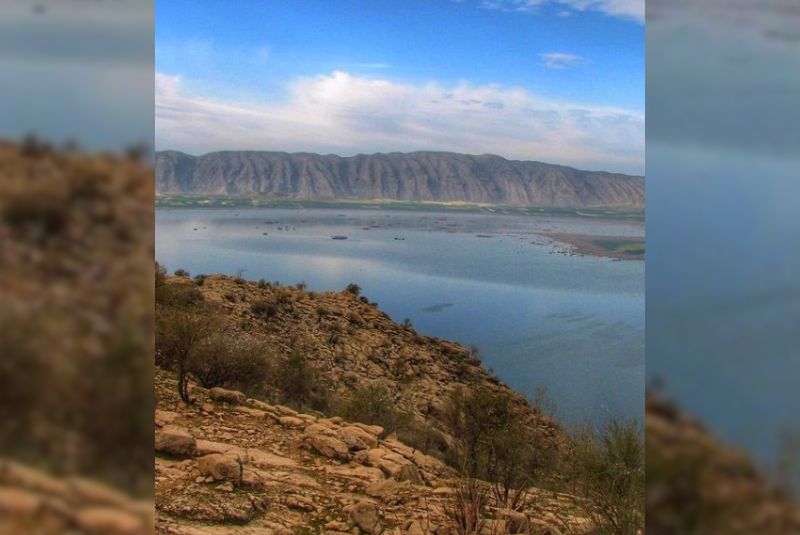
When visiting Parishan Lake, responsible tourism practices are essential to preserving its unique ecosystem and ensuring a safe, enjoyable experience. Here are some tips to make your visit both memorable and environmentally conscious.
Respect the Ecosystem
Parishan Lake is an ecologically sensitive area, home to a variety of migratory birds, fish, plants, and even rare animals like the Persian fallow deer. Avoid disturbing the wildlife by keeping noise levels down, especially during breeding and nesting seasons. Do not approach or feed wild animals, as human interaction can disrupt their natural behaviors and feeding patterns. If you’re photographing wildlife, maintain a respectful distance to avoid stress to the animals.
Leave No Trace
The beauty of Parishan Lake depends on its unspoiled environment, so be sure to leave no trace of your visit. Dispose of all waste responsibly by using designated bins or taking your trash with you. Avoid leaving behind food scraps, as they can attract animals and disrupt the natural balance. If camping, ensure your site is clean before you leave. Practicing "leave no trace" helps maintain the lake's natural beauty and prevents harmful waste from polluting the water and land.
Conserve Water and Resources
In this region affected by drought, conserving water is crucial. When washing or bathing near the lake, use eco-friendly, biodegradable soaps to prevent contamination. Avoid using more water than necessary, as water conservation efforts contribute to the long-term preservation of the lake and surrounding communities. The limited freshwater resources are essential to local agriculture, drinking water, and wildlife, so each small effort counts.
Stay on Designated Trails
To protect the surrounding vegetation and prevent soil erosion, stay on marked paths and trails. Off-trail walking can damage sensitive plant species and disturb animal habitats. Some areas around Parishan Lake may also be marshy or prone to quicksand, so staying on trails will enhance your safety while preserving the environment.
Avoid Lighting Fires
Due to the risk of wildfires, especially in dry seasons, avoid lighting open fires near the lake. If cooking, use portable stoves instead of campfires, and ensure they are fully extinguished after use. A single spark can lead to uncontrollable fires that destroy habitats and threaten wildlife, so exercise caution with any flammable materials.
Follow Local Regulations and Guidelines
Some areas around Parishan Lake may have restricted access to protect wildlife, especially during breeding seasons or migratory periods. Respect all local regulations and adhere to guidance from park authorities or local guides. This will not only protect the ecosystem but also allow you to gain valuable insights from locals who are deeply connected to the land.
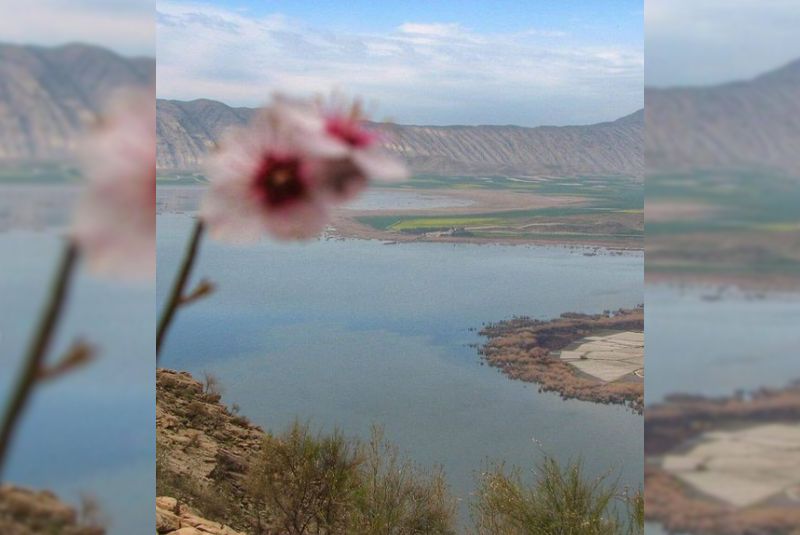
Travel in Small Groups
Large groups can have a significant impact on the environment, from noise pollution to trampling on vegetation. Traveling in smaller groups helps reduce environmental stress, especially in sensitive areas. Smaller groups are also more likely to have meaningful, immersive experiences and can enjoy the tranquility of Parishan Lake without creating disturbances.
Be Prepared for the Weather
Parishan Lake’s climate can vary throughout the year, so check the weather forecast before visiting and dress appropriately. During hot months, wear sun protection like hats, sunscreen, and light, breathable clothing. In colder months, dress warmly, as the area can get quite chilly, especially at night. Bring sufficient water, especially in summer, as dehydration can be a concern when exploring outdoor areas.
By following these tips, you can contribute to the sustainability and beauty of Parishan Lake, ensuring it remains a pristine destination for future visitors and a safe habitat for its incredible array of wildlife.
Finally!
Parishan Lake offers a serene escape into nature, rich with diverse flora, fauna, and striking landscapes. Nestled within the Zagros mountains, this lake is not only a refuge for wildlife, including rare migratory birds and Persian fallow deer, but also a scenic retreat for nature lovers. With nearby historical and ecological attractions such as the Arjan Plain and Bishapur, Parishan Lake is a treasure trove for both adventure seekers and cultural explorers. However, sustainable practices and respectful tourism are crucial to preserving its delicate ecosystem. A visit to Parishan Lake is more than a journey; it's a commitment to protect one of Iran's natural wonders for generations to come.
Share your story!
Comment below and let us know about your Experience.
Your story inspires others!


Comment
Leave a Comment